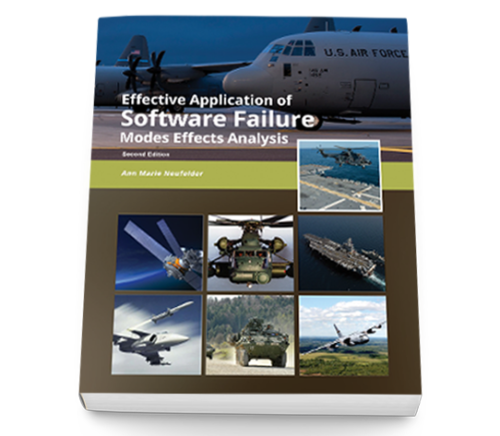This book is a practical step-by-step guide for reliability or software engineering practitioners. It illustrates each of the steps for performing a software FMEA and presents dozens of software failure modes and root causes. This book covers the eight possible viewpoints for conducting a SFMEA – requirements, interface design, detailed design and code, vulnerabilities, corrective actions, serviceability, usability and development processes. Faulty functionality, data, timing, sequencing and error handling are just some of the failure modes that are covered in this book. Real life examples of SFMEAs are shown during each step of the analysis as well as a cost benefit analysis. (256 pages)
*Available in Hardcopy Only.
If you would like to purchase the bundled package consisting of Effective Application of Software Failure Modes Effects Analysis & Software FMEA Toolkit, click here.


